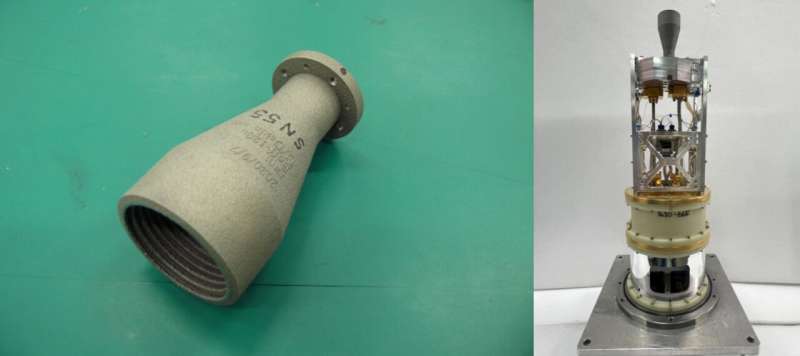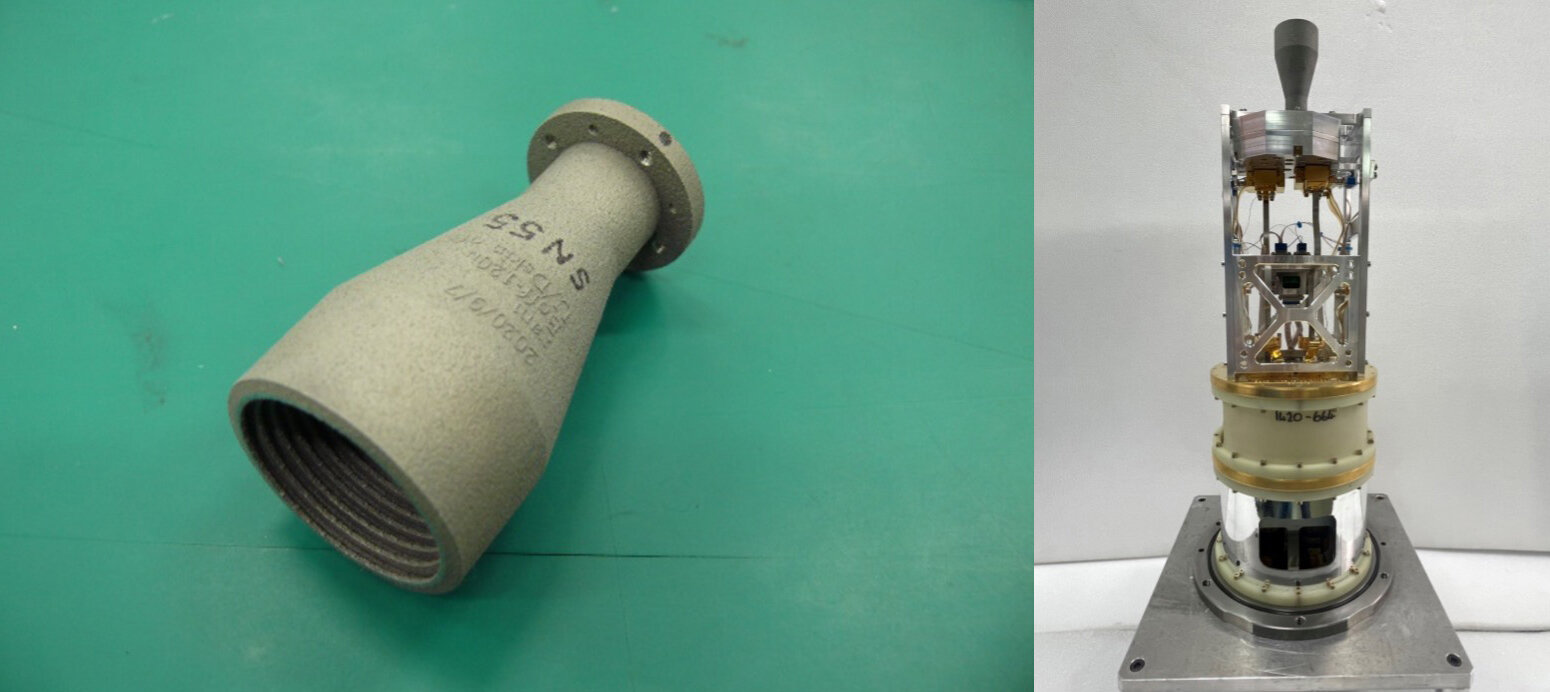
The NAOJ ALMA Project and Advanced Technology Center have successfully fabricated corrugated all-metal 3D-printed horns for the ALMA Band 1 receivers (Radio Frequency: 35–50 GHz).
Since around 2015, the NAOJ ALMA Project and the Advanced Technology Center have been studying the applications of additive manufacturing (AM), which produces three-dimensional objects by depositing, joining, and solidifying materials based on 3D models input to a control computer. Since astronomical receivers often have only one or two devices of each type per instrument and they require unique custom-made components, there is potential for effective use of additive manufacturing.
In the initial study, we selected different components for the ALMA Band 1 receiver, which were being prototyped at the time, and consulted with the distributor. Based on this initial study, we installed a metal 3D printer at the Advanced Technology Center in 2019 and started manufacturing corrugated horns for use in ALMA.
Corrugated horns collect electromagnetic waves from celestial objects after these have been focused by a large reflector antenna. Then, the waves collected by the horns are focused on detectors, the next components in the signal path. To be used in state-of-the-art radio astronomy receivers, it is not only necessary to satisfy the performance requirements for a corrugated horn, such as antenna beam pattern and frequency characteristics, but also to evaluate the metal material properties to ensure that the horn can be used without problems in the environment inside the receiver cartridge (temperatures around -250 degree Celsius and under vacuum conditions).
The best of these 3D-printed horns are being integrated onto the final ALMA Band-1 receiver production units and tested at low temperatures of around -250 degree Celsius at the Academia Sinica Institute of Astronomy and Astrophysics (ASIAA) in Taiwan. The performance verification results show the horns meet ALMA specifications. The fully-tested receivers will be installed in ALMA, becoming the first ever cryogenic receivers that utilize all-metal 3D-printed components for (sub)mm-wave astronomy.
Related research has been published in Journal of Infrared, Millimeter, and Terahertz Waves













